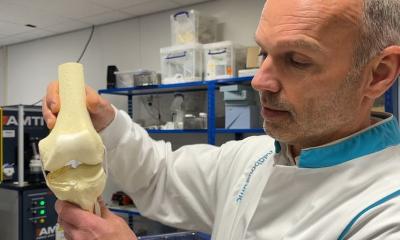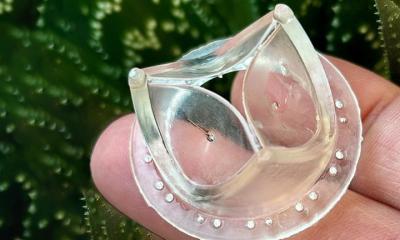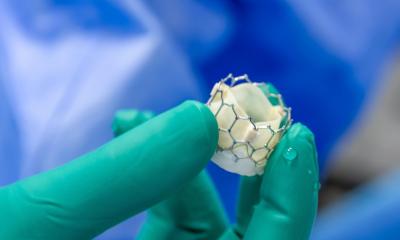Arthritis
Modular partial wrist implant may help with pain
Studies are underway to determine if a new modular partial wrist replacement will allow for better movement and last longer than traditional implants for people seeking relief from painful wrist arthritis. Although current options such as total wrist replacement and wrist fusion can alleviate pain, patients are often limited in performing certain activities after surgery.

"Wrist arthritis is one of the most common and debilitating conditions treated by hand surgeons," explained Scott Wolfe, M.D., the hand and upper extremity surgeon at Hospital for Special Surgery who developed the new device. "When conservative treatments fail to provide relief, patients often consider surgery. Because of the limitations of current surgical options, we set out to develop a better wrist replacement based on years of research into how the wrist moves."
Dr. Wolfe and colleagues, along with Extremity Medical, have designed the modular partial wrist replacement to be a better anatomical match for a normal wrist and thus preserve the wrist motion needed for a range of activities.
Seven surgeons from Canada, Europe, and Australia were trained in using the innovative device at the September meeting of the American Society for Surgery of the Hand in Seattle. They will follow patients and record results in an international wrist replacement registry to determine how they fare with the new prosthesis.
The new modular implant is the culmination of more than a decade of research funded by the National Institutes of Health (NIH) to understand how the wrist works. Dr. Wolfe and his longtime colleague, Joseph J. Crisco, III, PhD, of Brown University School of Medicine and Rhode Island Hospital, launched the NIH-funded studies to elucidate the underlying mechanisms of wrist movement.
The wrist is highly complex, with more than a dozen individual joints formed by eight small bones that collectively make up the wrist. It was previously believed that the wrist moved the hand in two different planes – up and down or side to side. The research by Drs. Wolfe and Crisco demonstrated that during many activities, such as throwing a ball, hammering a nail or pouring a glass of water, the wrist doesn’t move in just one of these directions. It accomplishes the action by combining movements in both planes.
“Traditional wrist surgeries often constrain the wrist to move in one plane at a time," said Dr. Wolfe. “Because of this, patients need to learn new ways to move their forearm and arm to compensate for the change. In so doing, they may further stress other joints; conversely, those with impaired neighboring joints may not be able to return to some activities, like playing tennis or golf."
Standard wrist replacements have also sustained a high failure rate because of the increased loads on the implant-bone interface due to these motion constraints, which leads to loosening and mechanical failure.
Surgery with Dr. Wolfe's novel implant, called a wrist hemiarthroplasty, replaces the proximal carpal row of bones at the base on the hand, those usually affected in patients with wrist arthritis. The implant utilizes modular components in various sizes to match a patient's individual anatomy and more closely mimic normal wrist motion.
The researchers believe the improved motion will enable patients to resume sports and other activities that they enjoy. They also believe studies will show the implant to be more durable than traditional wrist replacements, which only last 5 to 10 years. The modular nature of the device will also allow the partial wrist replacement to be more easily converted to a novel “midcarpal” total wrist replacement if needed down the road, according to Dr. Wolfe.
Source: Hospital for Special Surgery
10.11.2015











